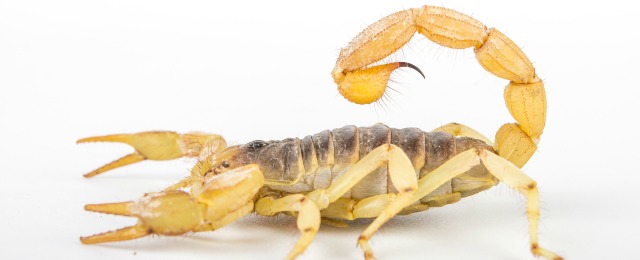
The history of scorpions dates back to over 400 million years ago. These eight-legged creatures are distant cousins of spiders and belong to the Arachnida class. Because of Arizona’s mostly warm and dry weather year round, they choose to successfully survive in our state. Scorpion stings can be very painful and possibly fatal. This leads worried homeowners to ask and wonder how many scorpion species are there in Phoenix.
There are more than 1,500 species of scorpions across the world. In the United States alone, there are about 100 different types. In Arizona, there are just about 50 scorpion species. Many of these are found in Phoenix.
Common Scorpion Species Found in Phoenix AZ
Phoenix, Arizona is an ideal habitat for scorpions. These creatures look for areas where it’s dry and warm, which makes the valley perfect for them. Some of the more common species of scorpions are the following:
-
Arizona Bark Scorpion
The bark scorpion is the most common type of scorpion species in Arizona. They have long and slender tails or metasomas. You can easily identify them through their yellowish-brown color. In some areas, the Arizona bark scorpion is striped.
Unfortunately for Phoenix homeowners, the bark scorpion is one of the most venomous and deadliest ones found in the state. While they are mostly found in desert areas, they sometimes seek shelter in homes. Many times, they accidentally sting humans. The most common victims are babies and small children.
When you are stung by an Arizona bark scorpion, you must see a doctor right away. More often than not, the bark scorpion’s sting is not fatal. However, you can’t take any chances. It is best to seek medical attention immediately.
-
Arizona Giant Hairy Scorpion
The best identifying factor of the Arizona giant hairy scorpion is its size. It is, in fact, the largest scorpion species found in the United States. They can grow anywhere from 5.5 to 6 inches. Just like the bark scorpion, they prefer rocky deserts but are sometimes also found in residential properties.
Because of their size, they can cause quite a shocking and unpleasant surprise to people who see them. Just like other scorpion species, they may painfully sting as well. Though their venom isn’t exactly fatal, severe allergic reactions to their stings could potentially turn deadly.
-
Arizona Stripetail Scorpion
Phoenix residents typically assume that every scorpion they come across is a bark scorpion. While always being cautious around scorpions is a good thing, it’s good to know that there is another scorpion that looks very similar to the bark scorpion. This species is known as the Arizona stripetail scorpion.
The stripetail scorpion grows less than 3 inches and is usually found under rocks. When you are around tending your garden or if your kids usually play outdoors, then the Arizona stripetail scorpion is the another one to look out for.
How to Deal With Scorpions in Phoenix
Scorpions are very common in Phoenix, Arizona. To get rid of them completely is a tough task but not an impossible one. As a homeowner, it is your responsibility to make sure that your property is free from these dangerous creatures for the sake of your family members and pets.
Panicking should never be an option. When you spot a scorpion in your home, make sure they don’t get close to any of your family members to avoid any stinging accidents. While you can possibly drive away a single scorpion on your own, ideally a professional should handle the situation for you to prevent possible injury. When you realize that scorpions have already invaded your property, you must seek expert assistance immediately.
At Watchdog Pest Control, we take calls for scorpion removal seriously. We make sure you get assistance as soon as possible. Allow us to help you out for your pest control and removal needs in your Phoenix property. Give us a call at 602-842-5290 for an appointment.

